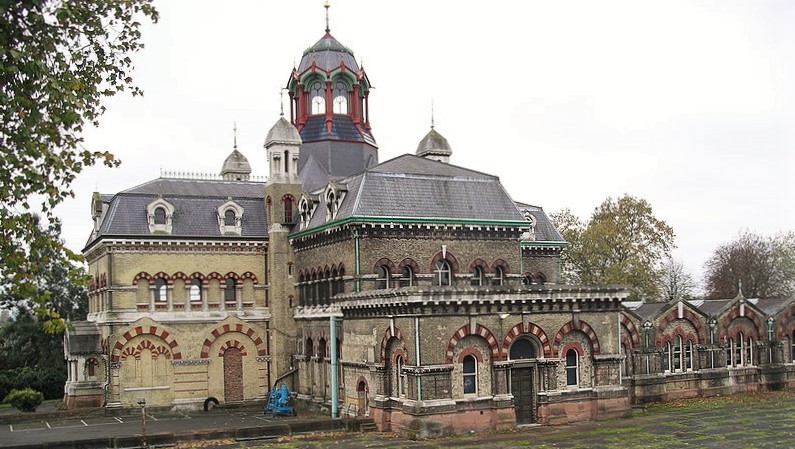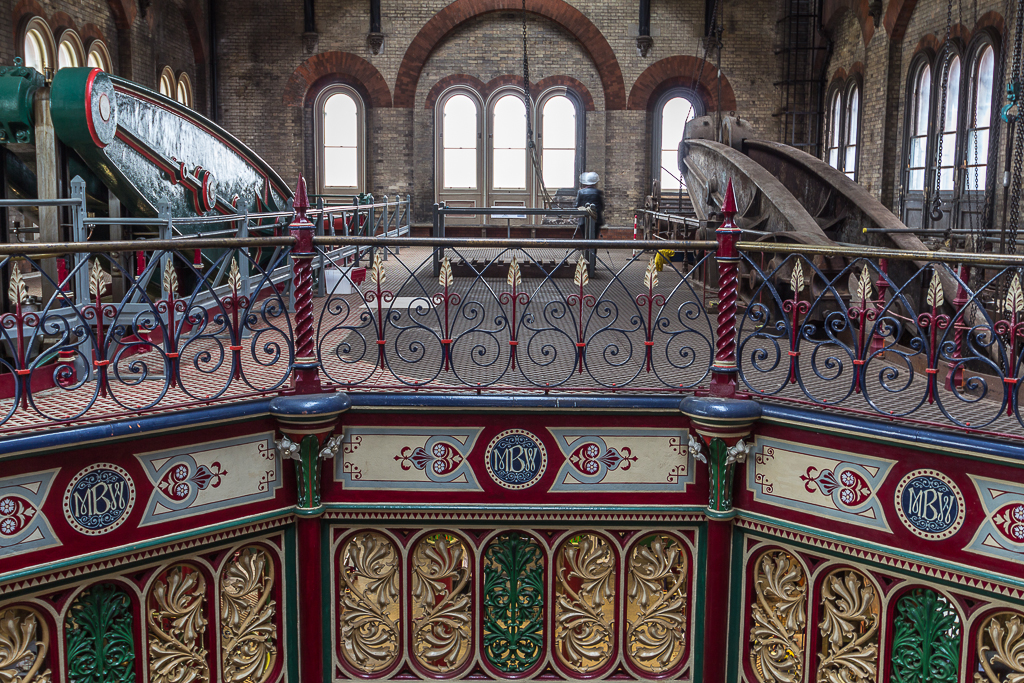Pumping station
|
The Victorian Abbey Mill pumping station on the London trunk sewerage system - no longer in use. |
Contents |
[edit] Introduction
A pumping station is a facility designed to draw and transfer fluids (such as water or sewage) from one location to another. This may be required in low lying areas when the location of the facility prevents the use of just gravity to lift the fluids for distribution.
Pumping stations are sometimes called pumphouses (when associated with irrigation systems or drilled wells), package pumping stations or packaged pumping stations (when used to describe private pumping stations) or lift stations (when describing systems designed for pumping waste or sewage). A pumping station may also be part of a hydroelectric facility.
[edit] Types of pumping stations
Pumping stations can be installed in situations such as; housing estates, healthcare or education campuses, commercial sites, industrial parks and so on. They may even be used for personal residences (such as in situations where a sewer passes over an incline). Depending on their application, facilities may use components including pumps, tanks (also referred to as collection chambers or wet wells), float switches, controllers, pipework and other mechanical devices.
|
The ornate interior of the Victorian Crossness pumping station. |
[edit] Canal water supplies
In situations where the location of the canal may not be able to reliably maintain the water levels needed to operate the locks, pumping stations may be used to draw water from other locations into the higher levels of the canals. Pumping stations may also be used to transport water from the low locks to the upper locks. This type of arrangement may be referred to as a back pumping system.
[edit] Land drainage
Water pumping stations are sometimes used to drain water from low lying areas that would otherwise be saturated and unsuitable for agriculture. This method may be deployed due to challenges brought on by elevation factors that prevent the use of canals.
[edit] Wastewater pumping stations
These systems are designed to transport waste or sewage material. The material is collected in a chamber (or wet well) until it reaches the level where the pump is activated.
[edit] Private pumping stations
These systems were once used by privately run developments or associations to transport surface water or waste water to a higher elevation.
In 2010, the Government decided that most private pumping stations that form part of the sewer or lateral drain systems that connect to the public sewer network should be transferred to the ownership of the regulated sewerage companies in England and Wales. The deadline for these transfers (referred to as pumping station adoptions) was October 2016.
Ref [[w/index.php?title=W/index.php%3Ftitle%3DW/index.php%3Ftitle%3DW/index.php%3Ftitle%3DW/index.php%3Ftitle%3DRef_https://www.ofwat.gov.uk/publications/transfer-of-private-sewers/%26action%3Dedit%26redlink%3D1%26action%3Dedit%26redlink%3D1%26action%3Dedit%26redlink%3D1%26action%3Dedit%26redlink%3D1&action=edit&redlink=1|https://www.ofwat.gov.uk/publications/transfer-of-private-sewers/]]
[edit] Related articles on Designing Buildings
- Civil Engineering during the Industrial Revolution in Britain.
- Filtration.
- How canals work.
- Ofwat.
- Sewerage.
- Thames tideway tunnel
- The redevelopment of Leicester's sewerage system by Joseph Gordon.
- Water Industry (Scotland) Act 2002.
- Water pressure.
[edit] External resources
Featured articles and news
RTPI leader to become new CIOB Chief Executive Officer
Dr Victoria Hills MRTPI, FICE to take over after Caroline Gumble’s departure.
Social and affordable housing, a long term plan for delivery
The “Delivering a Decade of Renewal for Social and Affordable Housing” strategy sets out future path.
A change to adoptive architecture
Effects of global weather warming on architectural detailing, material choice and human interaction.
The proposed publicly owned and backed subsidiary of Homes England, to facilitate new homes.
How big is the problem and what can we do to mitigate the effects?
Overheating guidance and tools for building designers
A number of cool guides to help with the heat.
The UK's Modern Industrial Strategy: A 10 year plan
Previous consultation criticism, current key elements and general support with some persisting reservations.
Building Safety Regulator reforms
New roles, new staff and a new fast track service pave the way for a single construction regulator.
Architectural Technologist CPDs and Communications
CIAT CPD… and how you can do it!
Cooling centres and cool spaces
Managing extreme heat in cities by directing the public to places for heat stress relief and water sources.
Winter gardens: A brief history and warm variations
Extending the season with glass in different forms and terms.
Restoring Great Yarmouth's Winter Gardens
Transforming one of the least sustainable constructions imaginable.
Construction Skills Mission Board launch sector drive
Newly formed government and industry collaboration set strategy for recruiting an additional 100,000 construction workers a year.
New Architects Code comes into effect in September 2025
ARB Architects Code of Conduct and Practice available with ongoing consultation regarding guidance.
Welsh Skills Body (Medr) launches ambitious plan
The new skills body brings together funding and regulation of tertiary education and research for the devolved nation.
Paul Gandy FCIOB announced as next CIOB President
Former Tilbury Douglas CEO takes helm.
UK Infrastructure: A 10 Year Strategy. In brief with reactions
With the National Infrastructure and Service Transformation Authority (NISTA).
























